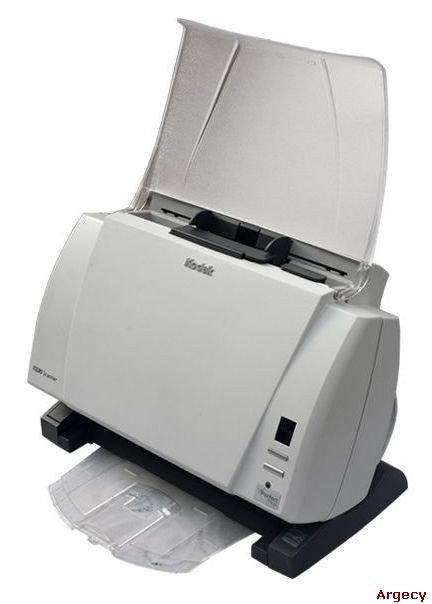i1220 Scanner

i1220 Scanner
Specifications
Recommended Daily Volume
Up to 3,000 pages per day
Scanning Technology
i1210 Plus: Single CCD; i1220 Plus: Dual CCD; Grayscale output bit depth is 256 levels (8 bits); Color capture bit depth is 48 bits (16 x 3); Color output bit depth is 24 bits (8 x 3)
Throughput Speeds (portrait, letter size)
Bitonal/grayscale: Up to 45 pages per minute at 200 dpi
Color: Up to 30 pages per minute at 200 dpi and 300 dpi
(Throughput speeds may vary depending on your choice of driver, application software, operating system and PC.)
Optical resolution
600 dpi (1200 dpi A4 flatbed accessory)
Illumination
Dual fluorescent (cold cathode)
Output resolution
75, 100, 150, 200, 240, 300, 400, 600 and 1200 dpi
Max./Min. Document Size
216 mm x 863 mm (8.5 in. x 34 in.)/50 mm x 63.5 mm (2 in. x 2.5 in.)
Paper Thickness and Weight
34-413 g/m (9-110 lb.) paper; ID card thickness: up to 1.25 mm (0.05 in.)
Feeder
Up to 75 sheets of 75 g/m (20 lb.) paper
Handles small documents, such as ID cards, embossed cards and insurance cards
Multi-feed Detection
With ultrasonic technology
Connectivity
USB 2.0 (cable included)
Bundled Software
TWAIN, ISIS, WIA Drivers; KODAK Capture Desktop Software, Smart Touch; Nuance ScanSoft PaperPort and OmniPage. Linux SANE and TWAIN Drivers available from www.kodakalaris.com/go/scanonlinux
Imaging Features
Perfect Page Scanning; iThresholding; adaptive threshold processing; deskew; autocrop; relative cropping; aggressive cropping; electronic color dropout; dual stream scanning; interactive color, brightness and contrast adjustment; automatic orientation; automatic color detection; background color smoothing; image edge fill; image merge; content based blank page detection; streak filtering; image hole fill; sharpness filter
File Format Outputs
Single and multi-page TIFF, JPEG, RTF, BMP, PDF, searchable PDF
Accessories
KODAK white imaging background accessory (front), KODAK A3 Flatbed (black background) Accessory with 1.8-meter (6 ft.) cable
Power Consumption
Scanner: Off mode: <4 watts; Running: <35 watts
Scanner with A3 Flatbed: Off mode: ?6 watts: Running: <65 watts
Scanner with A4 Flatbed: Off mode: ?6 watts: Running: <57 watts
Environmental Factors
ENERGY STAR qualified scanners, Operating temperature: 10-35 C (50-95 F), Operating humidity: 15% to 76% RH
Acoustical Noise (operator position sound pressure level)
Off mode: <30 dB(A)
Operating mode: <58 dB(A)
Recommended PC Configuration
For documents up to 660 mm (26 in.) long at 400 dpi: Intel Core2, 2 GHz Duo Processor or equivalent, 2 GB RAM. For longer documents/higher resolutions: Intel Core2, 2 GHz Duo Processor or equivalent, 4 GB RAM. Note: for optimal performance when using a PC running the Windows 7 operating system, at least 3 GB RAM is recommended.
Supported Operating Systems
Windows XP SP2 and SP3 (32-bit), Windows XP x64 edition SP2, Windows Vista SP1 (32-bit and 64-bit), Windows 7 (32-bit and 64-bit), Windows 2003 Server and 2008 Server x64 Editions, Linux Ubuntu 8.04, Fedora 9, SUSE 11
Dimensions
Weight: i1210 Plus: 5.2 kg (11.5 lbs.), i1220 Plus: 5.5 kg (12 lbs.)
Depth: 162 mm (6.3 in.) not including input tray and output tray
Width: 330 mm (13 in.)
Height: 246 mm (9.7 in.) not including input tray
Specifications are subject to change without notice.
Data Security
Protecting Customer Information - KODAK Scanners process scanned data exclusively through volatile memory ensuring image data is effectively erased upon shut down.
This scanner contains non-volatile storage (NVRAM), and volatile memory (SDRAM).
Volatile memory is used to store customer image data. It is erased when the device is turned off.
Non-volatile memory is used to store program data, scanner settings, and scanner calibration data. No customer image data is stored in non-volatile memory.
The only scanner settings stored permanently are the Energy Star settings. No other customer data is stored in the non-volatile memory.
NOTE: The image data is passed to a PC which has its own ability to store images and information. The customer will also need to consider what precautions must be taken to secure the data on the PC.


